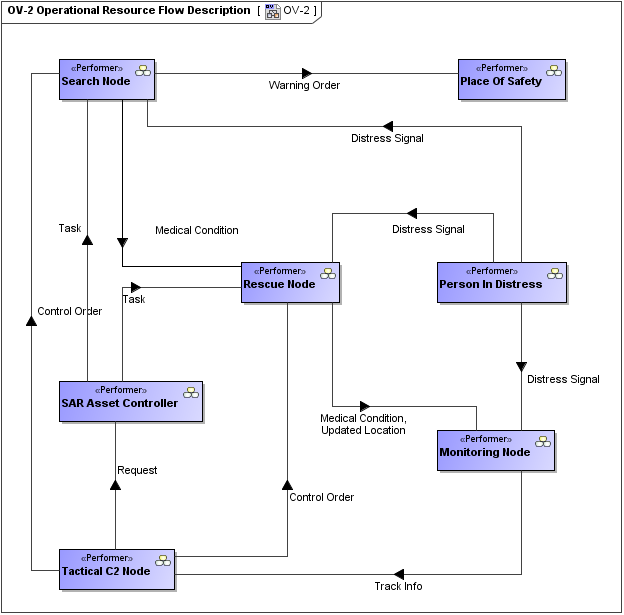Description
The OV-2 DoDAF-described Model applies the context of the operational capability to a community of anticipated users. The primary purpose of the OV-2 is to define capability requirements within an operational context. The OV-2 may also be used to express a capability boundary.
New to DoDAF V2.0, the OV-2 can be used to show flows of funding, personnel and materiel in addition to information. A specific application of the OV-2 is to describe a logical pattern of resource (information, funding, personnel, or materiel) flows. The logical pattern need not correspond to specific organizations, systems or locations, allowing Resource Flows to be established without prescribing the way that the Resource Flows are handled and without prescribing solutions.
The intended usage of the OV-2 includes:
- Definition of operational concepts.
- Elaboration of capability requirements.
- Definition of collaboration needs.
- Applying a local context to a capability.
- Problem space definition.
- Operational planning.
- Supply chain analysis.
- Allocation of activities to resources.
Implementation
OV-2 can be represented using:
- An OV-2 diagram which is based on the UML Class diagram.
- An OV-2 diagram which is based on the UML Composite Structure diagram.
- A UML Class diagram.
- A UML Composite Structure diagram.
- A SysML Block Definition diagram.
- A SysML Internal Block diagram.
The Needlines established in an OV-2 can be realized by resources and their interactions in a SV-1 Systems Interface Description model or SvcV-1 Services Context Description model.
In developing an Architectural Description, OV-2 and OV-5b Operational Activity Model are often the starting points and these may be developed iteratively. OV-2 focuses on the Operational Resource Flows, with the activities being a secondary adornment. The OV-5b, on the other hand, places first-order attention on operational activities and only second-order attention on Resource Flows, which can be shown as annotations or swim lanes on the activities.
